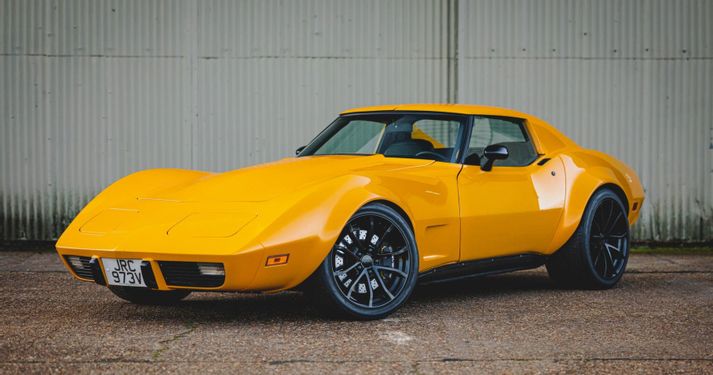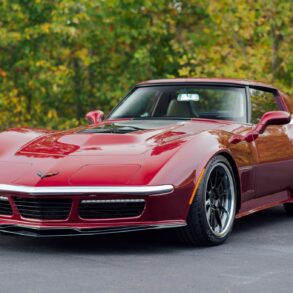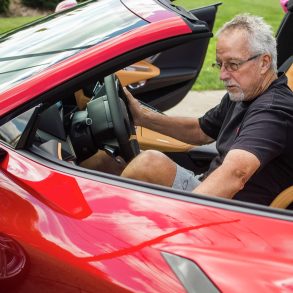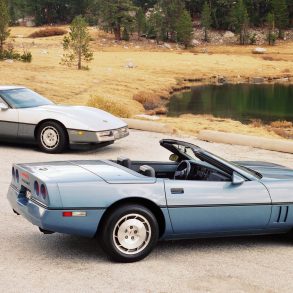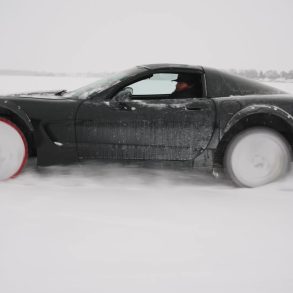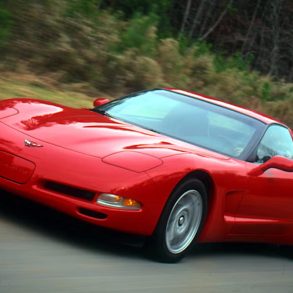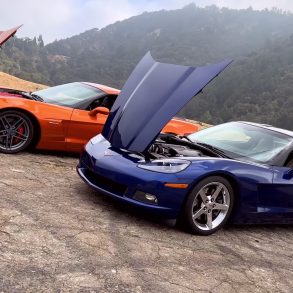FOR SALE: A Stunning 1976 Corvette Restomod
One of the biggest criticisms repeatedly slung at mid-seventies Corvette is this: they look cool but they are SLOW. Sadly, GM had to cut horsepower during the mid-1970s due to increasing EPA regulations and a major OPEC fuel crisis that crippled the American automotive industry as a whole. They kept building cool-looking Corvettes, but the truth was, these cars were underpowered and just didn’t wow consumers the way a Corvette is supposed to.
Fast forward a few decades to the fifth- and sixth-generation Corvettes. Horsepower and handling were now the cornerstones of what made the Corvette great. While both the C5 and C6 still looked cool, neither harkened to automobile aficionados in quite the same way as the third-generation, classic coke-bottle-shaped Corvettes of yesteryear did/do.
The solution? Build a 1976 Corvette restomod that is powered by and handles like the underpinnings of a fifth/sixth generation Corvette.
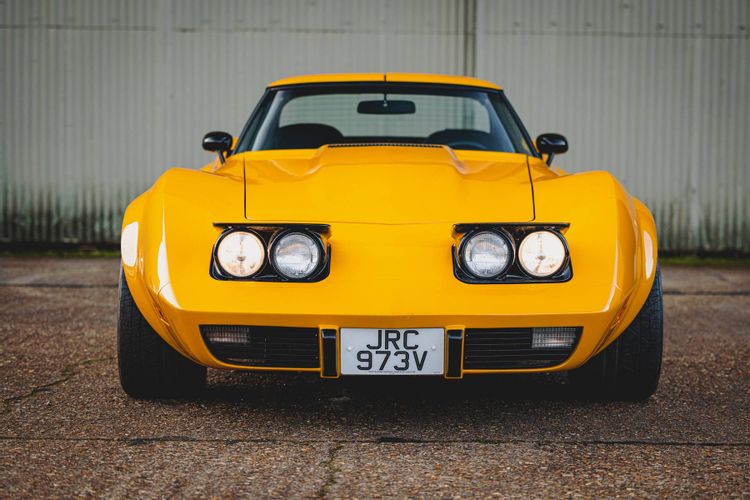
A 1976 Corvette Restomod by Protourergarage
There just so happens to be a beautiful example of a 1976 Corvette restomod for sale via auction at “The Market by Bonhams.” This car was one of two 1976 Corvette built by Hungarian resto-mod specialists Protourergarage. This company, which hails from Budapest, was founded ten years ago by a pair of friends who decided they should start building pro-touring Corvettes for the European market. After nearly a half-decade of development, the pair created these C3 Corvette coupes as proof-of-concept vehicles. The cars each retained their original, exterior body shells, but were paired to an assortment of technologies from more modern-era Corvettes.
The Corvette that we’re sharing today was built on an original C3 chassis and even contained some of the original C3 hardware. Paired to that was additional hardware in the form of suspension, brake hardware, and the like, from a fifth-generation Corvette. At its heart, the pair placed a fifth-generation LS1 V8 engine mated to a six-speed manual transmission lifted directly out of a sixth-generation Corvette. The car has traveled just over 1,200 miles since being fabricated, suggesting that this restomod is still, essentially brand new – at least in terms of its life as a hybrid of multiple Corvettes.
The chassis, which was fabricated to Protourergarage’s own design, used QA1 coil-over suspension at all four corners; the original chassis and running gear had been delivered to the company’s workshops in very poor condition. Given the added cost required to refurbish it to usable condition, everything but the car’s body was discarded. The body was repaired and upgraded to accommodate the new chassis and running gear. Its sister car featured C6 hardware more prominently throughout its chassis, and it had a more powerful engine than the car offered here. Point of fact, the sister car placed seventh in the 2016 Tuning World competition in Bodensee, Austria, whittled down from 30,000 initial entrants.
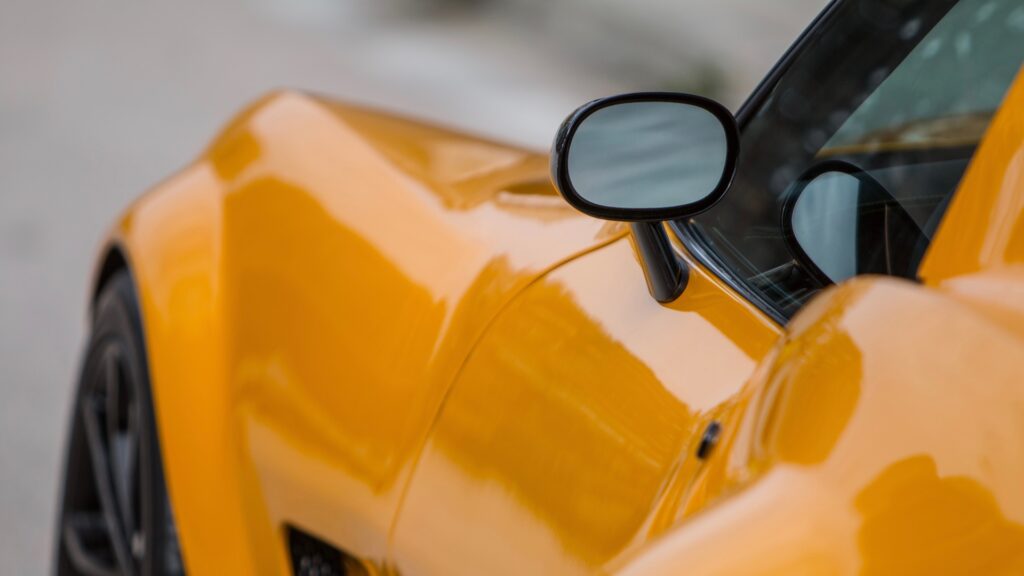
The Exterior
Outwardly, this car is almost all stock C3 Corvette, save for a couple of minor – but notable – alterations. First, extra fiberglass was added to wider the car’s front and rear tracks to match those of its C5 donor car. Second, the wheel openings were altered slightly to accommodate wider wheels (18 x 9.5 out front and 19 x 12 in the back) from a C6 Corvette Centennial Edition. These wheels, which are finished in a glossy black, give the car a much bolder appearance than the factory wheels from that era.
Originally painted red, the car was repainted as part of its rebuild. The new color, Ford Tangerine Scream Pearl (ouch, a Ford color on a Corvette?) was originally offered to consumers by Ford from 2012 to 2019 as an option on the European Focus ST. The color (which really does look striking on this Corvette) was selected because of how well it stood out amongst the competition. The paint finish on this car is much nicer than anything that came out of St. Louis in the mid-1970s.
All brightwork, including the door handles, were repainted black, as were with the outer sill kick panels. The contrast between the orange and the black is striking.
Per the comments on the auction site, the car’s panel fitment and gelcoat surfaces appear to be in excellent condition. The car still has its single-piece rear bumper, a feature that became standard fare in 1975. The fiberglass around the pop-up headlights, the door jambs, the filler cap surround and the taillight cutouts are free of any blemish/defect. The only notable defects are small chips in the paint on the rocker panels from the opening/closing of the doors.
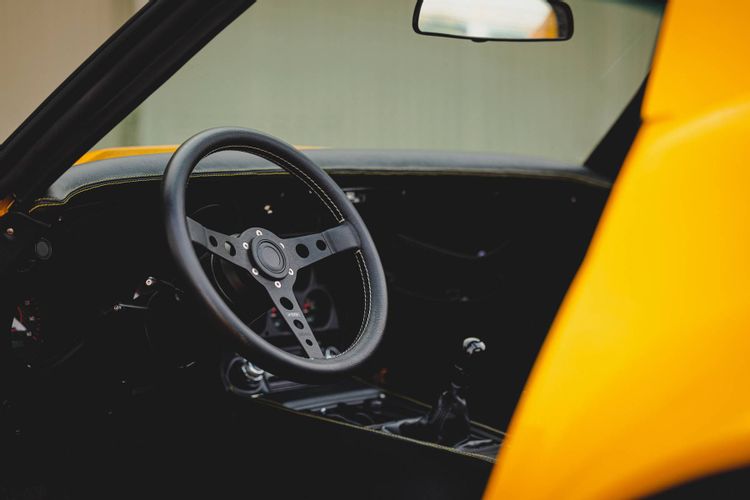
The Interior
The interior of this Corvette is a significant departure from the factory setup. This car is equipped with an aftermarket gauge cluster from Dakota and a Retrosound radio specially fitted to match the factory nacelles and aperature. The dashboard and center consoles have both been replaced, though the replacement components match the factory look of the car (minus the cracking/crazing often associated with aging.) The car also features a Momo Prototip steering wheel, leather-trimmed A-pillars and yellow stitching along the dash and door trim.
This car features the stock T-tops, though these are in far better condition than any factory tops dating back to 1976. There are no rips or tears in their headliner inserts, and the outer edge of the windscreen where the panels rest appears to be in excellent condition. All weatherstripping looks to be in excellent condition, and it was reported that it was replaced in its entirety as part of the 2016 rebuild. The Corvette’s seats were also re-worked during the rebuild. They come wrapped in matching leather, with the aforementioned yellow stitching on both the upper and lower cushions. Both seats appear in excellent condition, with no blemishes, tears, or wear marks anywhere on the leather.

Under the Hood
Below the hood lives a low-mileage, fully rebuilt LS1 engine out of a fifth-generation Corvette. This engine was shipped from the United States to Hungary specifically for this project, and it replaced the car’s factory 5.7-liter, 180 horsepower L48 engine. The engine was fitted with special metal supports built by Protourerergarge. These are designed to reinforce the engine in the older chassis. All supports appear to be free of rust and the engine itself appears to be clean and free of any leaks. Free-flowing exhaust headers were installed and helped bolster the LS1’s output to 380 brake horsepower. The rest of the exhaust system is also custom-fabricated for the car.
As mentioned earlier, engine horsepower is transferred to the rear wheels via a 6-speed manual transaxle lifted directly from a C6 Corvette. The car also has sixth-generation Z51 brakes.
The Corvette is being auctioned off in the United Kingdom, where it’s currently registered as a tax-exempt historic vehicle. However, the auctioneer has the ability to export it to the United States, should the winning bid come from this side of the pond. The pre-auction sell price estimate is 30,000 to 50,000 British pounds or about $40,000 to $67,000 at current exchange rates.
Protourergarage has since built more than 100 Corvette restomods to customer specifications. They continue to build these cars using a C3 donor platform, though they’ve also been at work on a C2/C6 resto-mod which is currently in build status. Still, this original C3 Corvette represents the very start of Protourergarage’s journey, and the results speak for themselves.


